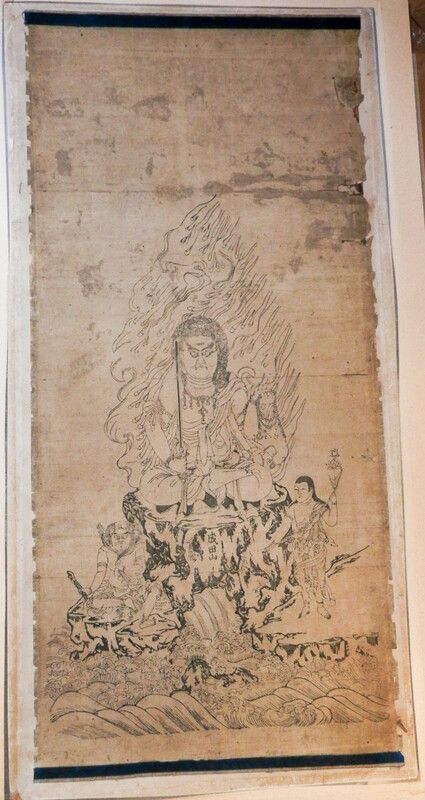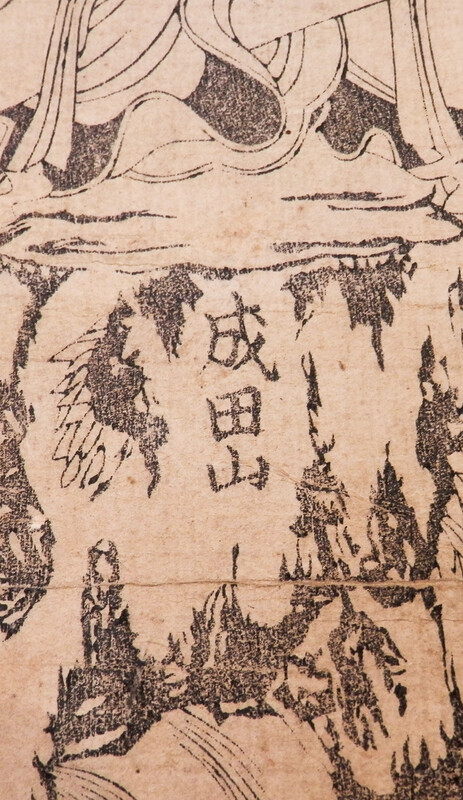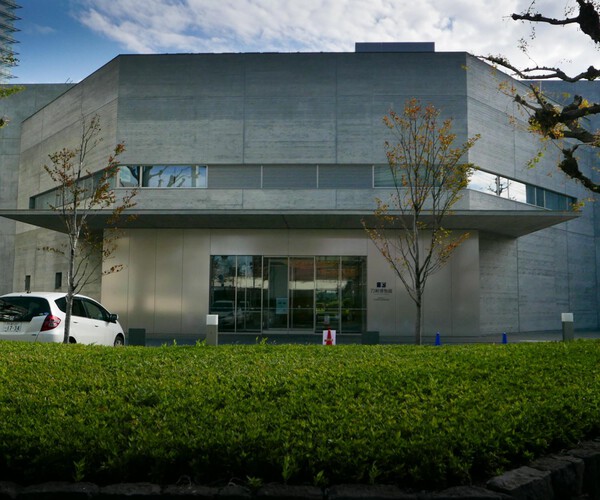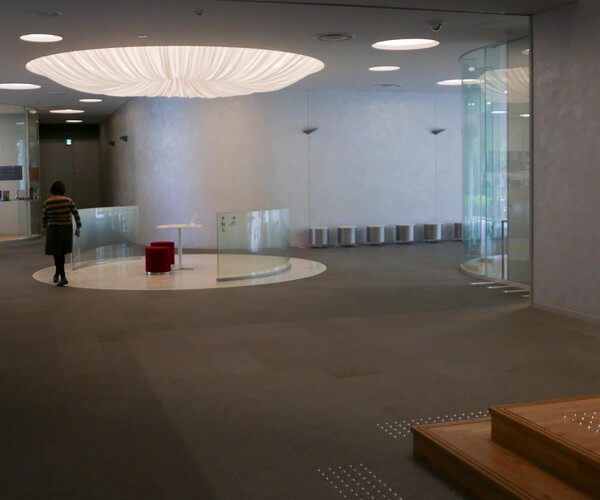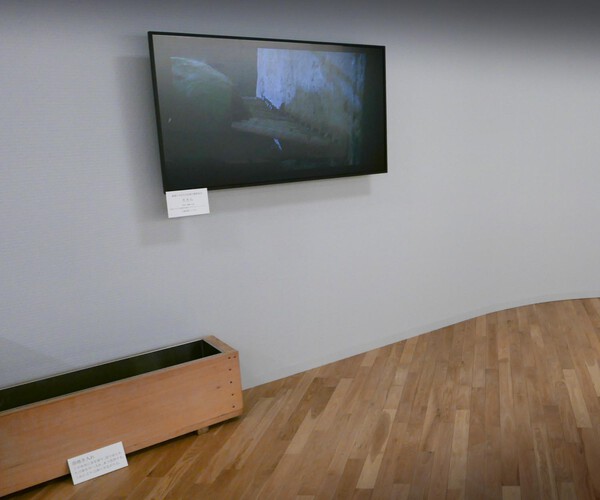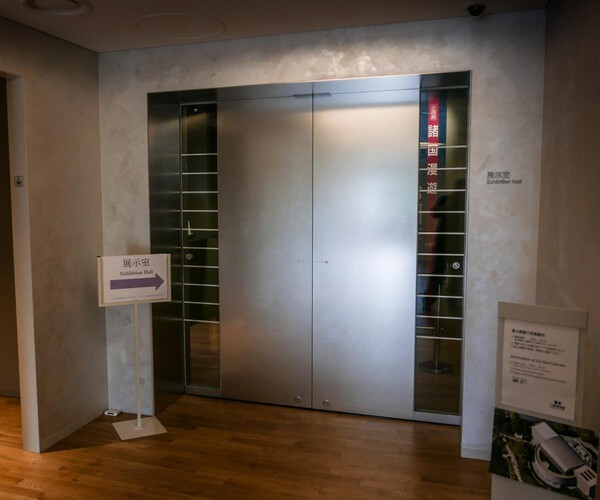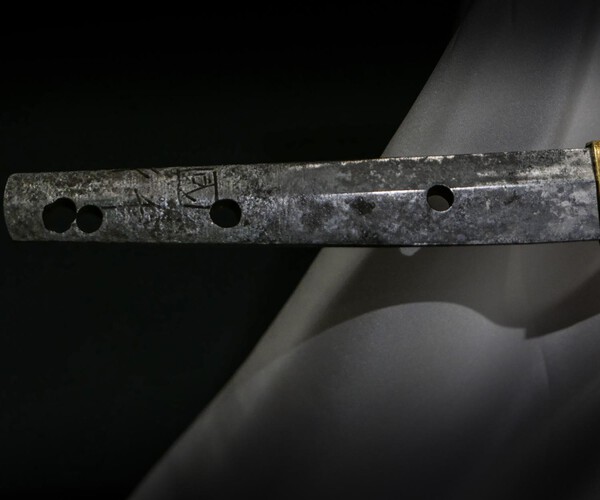-
Posts
503 -
Joined
-
Last visited
-
Days Won
33
Content Type
Profiles
Forums
Events
Store
Downloads
Gallery
Everything posted by Baka Gaijin
-
Good Evening Bernard, Such names, Luminaries in the truest sense, despite this current age of instant online expertise. That which you have thus described, surely must fill in some valuable gaps in the perceived history of old school, "feet on the ground" 19th Century contributors to the burgeoning field of Pre and Early Modern Japanese Studies. Thank you
-
Good morning Bernard, I like the Hokusai attributed drawing, the question arises, which Katsushika? Katsushika Hokusai himself or Katsushika Oi? Fascinating story: https://en.wikipedia.org/wiki/Katsushika_%C5%8Ci Have a look under a glass of about 10x magnification and you will see thin and wispy pentimenti under and around the finalised ink in the main body and also amid the diagonal strokes. Well discovered Steve, re the collaboration between Urushibara and Brangwyn. Urushibara was quite a prolific artist in his own right, sometimes using the name Mokuchu, here is his rendition of a pile of old stones just down the road from me: This article from the "Grauniad" should fill in the gaps: https://www.theguardian.com/artanddesign/gallery/2017/feb/14/frank-brangwyn-yoshijiro-urushibara Re: "Grauniad" (UK Joke, you'll have to be a bit of a Private Eye to work it out).
-
Hi Brian, this would have been a preparatory drawing. The dealer Richard Kruml,who originally displayed it, described it as probably showing Satsuma troops battling with an Imperial soldier on a rearing horse. http://www.japaneseprints-london.com/1085/ As the production of a woodblock print involved the destruction of the artist's final drawing, a number of preparatory sketches would be done to get the balance correct, then a crisp line drawing would have been produced, which would be pasted to the first block and the Master block carver would start the cutting process.. This final drawing was known as the Hanshita - e. This will fill in the gaps: http://www.aisf.or.jp/~jaanus/deta/h/hanshita.htm Here's a similar, albeit reversed rearing horse in this triptych by Yoshitoshi: https://data.ukiyo-e.org/bm/images/AN00694564_001_l.jpg
-
Good morning everyone, A few posts back, I used the term pentimenti, being the visible trace of other drawing beneath the final design. Literally "evidence of the hand", showing the decision making process as the artist works the layout of the elements of the drawing. Here's an example by Yoshitoshi.
-
Hi Guys, I'm Back, with perhaps a more appropriate username! Nothing to see here! Move on! The Artist previously known as Malcolm, now signing as Malcolm T, when he can work out how to do it, and zero ratings......... ROFL. Cue for Handel's "Sarabande": https://www.youtube.com/watch?v=AWMR79IMQ-M Pip Pip Cheerio Mateys!!
-
With respect and thanks to Professor Oka for allowing free access to her monograph on this time honoured publication: https://dept.sophia.ac.jp/monumenta/news.php Bettina Gramlich-Oka Chief Editor, Monumenta Nipponica Professor, Japanese History Faculty of Liberal Arts & Graduate School of Global Studies Sophia University
-
Here is some eye candy, for everyone in current lock-down mode. 53 Stations of the Tokaido: Here is the route, from Station 1 - Nihonbashi in Edo to Station 53 The great Sanjo bridge in Kyoto. https://www.wdl.org/en/item/9933/ However, it turns out there were actually 55 stations along the way, confused?? Here's what the road looked like in the early days of photography: http://oldphoto.lb.nagasaki-u.ac.jp/en/list.php?req=2b https://en.wikipedia.org/wiki/T%C5%8Dkaid%C5%8D_(road)#/media/File:Tokaido1825.jpg Now, the artists: Hokusai: https://ukiyo-e.org/image/mfa/sc224949 https://ukiyo-e.org/image/mfa/sc143100 https://ukiyo-e.org/image/mfa/sc224914 https://ukiyo-e.org/image/mia/62742 https://ukiyo-e.org/image/mfa/sc157713 https://ukiyo-e.org/image/mfa/sc142258 Hiroshige: https://www.hiroshige.org.uk/Tokaido_Series/Tokaido_Series.htm https://www.fujiarts.com/Japanese-prints/Static-Sets/Hoeido-Tokaido/0-main.html https://www.teamwakon.com/blogs/news/82153862-the-fifty-three-stations-of-the-tokaido https://www.hiroshige.org.uk/Tokaido_Series/Tokaido_Road.htm Hiroshige II: https://ukiyo-e.org/image/mfa/sc232975 Sadahide: https://ukiyo-e.org/image/mfa/sc232577 Kuniyoshi: http://www.kuniyoshiproject.com/Main%20-%20Landscapes.htm Utagawa Kunisada: http://www.kunisada.de/Kunisada-landscape/early-landscapes-0.htm Toyohara Kunichika: https://ukiyo-e.org/image/mfa/sc152549 Kawanabe Kyosai: https://ukiyo-e.org/image/mfa/sc231880 Utagawa Yoshitsuya: https://ukiyo-e.org/image/mfa/sc233085 Utagawa Yoshitora: https://ukiyo-e.org/image/mfa/sc231921 Ochiai Yoshiiku https://ukiyo-e.org/image/mak/11565-77 By the time we get to Meiji, the interest wanes in favour of other subject matter, however there are some images: Yoshitoshi: http://www.yoshitoshi.net/series/Tokaido.html Fujikawa Tamenobu https://ukiyo-e.org/image/artelino/45856g1 Now in the 20th century: Kawase Hasui: https://ukiyo-e.org/image/mfa/sc205883 Tsuchiya Koitsu: https://ukiyo-e.org/image/jaodb/Tsuchiya_Koitsu-No_Series-Tokaido_Yaizu_no_hara-00027714-030421-F06 Soseki Komoro: https://ukiyo-e.org/image/jaodb/Soseki_Komori-53_Stations_of_the_Tokaido_Road-Odawara-00032632-021002-F06 Here you can see the Stations as they are today: http://www.guusrijven.com/archive/eng/projects/tokaido/index.html Enjoy お願いします
-
Gentlemen and Ladies, I have had the great good fortune, to obtain an early woodblock print of the Buddhist deity Fudō Myō-ō It is seriously rare, and, I request assistance here, also, please be aware that the item is not for sale, so, I have no dog in the fight, so to speak, I just want to know more about the item that I have acquired, and now cherish. (It is currently being sent to Japan for conservation and mounting as a Kakejiku scroll, as it was originally intended. This came from from an important English Estate, and, along with Armour, Swords and Kodogu, was acquired by an Important published English Diplomat, in Japan in the 1870's. There is an annotation to the card support - verso, by the previous family owner which states: "14th/15th Century ō-sugata or ō kage woodblock print - August Shade. However, it is the very early stages of my research into it, so I will conservatively refer to it as early Edo era 1600 - 1868 for the time being. The exciting part is that it was printed at Naritasan Shinshoji Temple, which I know very well, and would have been sold to visiting faithful, to benefit the temple, much in the same way Omamori are sold today. Apparently these Talismanic prints were called ō-sugata or ō kage - August Shade. I've not come across those terms before, so it's all a great voyage of discovery. I think, on reflection, that August, does not refer to the month (for obvious reasons), but to the August or elevated nature of the subject matter, using the sensibilities of the late Victorian era. Thank you in advance for you kind cooperation.
-
-
Hi guys, Just off the press, so to speak. Anyone in Japan at the moment for DTI, would do no better than stopping off at Sakura, which is on the Keisei line to Narita Airport. I have visited Sakura three times previously, to visit the Rekihaku museum and its small gun collection. This time, the Reticular Actvation Center of this addled brain was online and I spied an ad for the Tsukamoto Sword Museum just behind Sakura Museum of Art. Straight up from Keisei Sakura Eki and a double dog - leg at the top of the rise, by the Catholic Church found a lane with a long wall, whitewashed in the morning sun. At the end, three surly schoolgirls bunking off school, were surprised that their little haven had been broached, and disappeared in a giggling mist of AKB48. Peace now restored, I discovered the bronze cast signs stating “ Tsukamoto Bijutsu Hakubutsukan “. A short sharp walk brought me into the courtyard / parking space enough for two cars and the portico of this unassumingly stylish building, which was painted in bright white. Above the portico, I spotted the clue to its ownership in the form of a ceramic Kamon, depicting Maru Ni Mitsu Kashiwa. I noticed two pairs of shoes, toes pointing outwards on the double step Genkan. Two pairs became three and I was greeted by the curator who gave me some slip on sandals. He noticed my camera and grinned, Shashin OK!! He added, no charge entry....(my kind of guy!!!) I was given a brush pen and signed in. There he left me to ascend the staircase to the gallery, which contained some 20 blades and Koshirae, from the permanent collection of over 400 items, along with a display of the stages of making a Sword, similar to the one at the NBTHK. I spent an hour closely examining the display, which included some big names including Hizen no kami Tadayoshi and Inoue Shinkai. In summary, well worth the visit. I will update this with some snaps, when I am back in Blighty. Nihonshu calls........????????
-
Here's a visual treat in two volumes: 尚古鎧色一覧 Shōko Gaishoku ichiran Colours of Ancient Armour lacing. Fom Waseda University Library Volume 1: http://archive.wul.waseda.ac.jp/kosho/ke05/ke05_00230/ke05_00230_0002/ke05_00230_0002.html Volume 2: http://archive.wul.waseda.ac.jp/kosho/ke05/ke05_00230/ke05_00230_0001/ke05_00230_0001.html
-
- 1 reply
-
- 3
-

-
Just come out of the “Kyo no Katana” - “Swords of Kyoto” exhibition at the Kyoto National Museum. It is an extraordinary event. However, those preparing to visit should be advised that there is a queuing system. Also photography is forbidden, despite a previous report to the contrary. The queue to view the Sanjō Munechika Meibutsu blade takes 40 minutes, of slow shuffling in the dark. Similar important blades have 30 minute waiting time. Many people chose not to queue and observed from a distance with a monocular (which I had seen for sale at the new NBTHK Hakubutsukan, last week). When I arrived for the 09.30 opening, there was already a 30 minute wait to get into the building itself. It might have been the day, but I would estimate 70% women, a few in Kimono. All in all, a spectacular event, well worth the waiting time.
- 5 replies
-
- 11
-

-
時差ぼけ, Jisaboke, a term the Japanese have for Jet Lag, can be a most positive experience. The result of such nocturnal wanderings, prompted by recent postings upon the topic of dating a blade by its Nakago, is the short patina section by Henry W Nicholls from the "Field book of Japanese sword - mounts in the collections of the Field Museum of Chicago", curated by Helen Gunsaulus. Published 1923. https://archive.org/details/japaneseswordmou16guns/page/162 And of course, hopefully, it goes without saying to add..... Don't try this at Home!! Whilst charmingly dated, the book contains some interesting illustrations and explanation of various styles of Tsuba: https://archive.org/details/japaneseswordmou16guns/page/n7
-

Help With Seppa Kanji Please!
Baka Gaijin replied to Bruce Pennington's topic in Translation Assistance
Hi Bruce, do you have a shot from sideways on? Looking at the mixed metal colours together with the slight curved depression at midpoint 3 o'clock in image 2 suggesting a Kodzuka pocket on the original Saya, and the deep shadows in the nakago ana, I wonder if this is in fact a Fuchi? And as StevenK points out, the flat plane of a Fuchi is called Tenjo Gane. Which would explain the lower symbol as a Kao or formal art signature maybe? -
Hi again Ed, If you want to read all 125 poems that the Emperor Meiji wrote, they are here as a PDF, courtesy of Franz Stein and Joao Magalhaes of ihreiki.com http://ihreiki.com/images/downloads/meijipoems.pdf
-
Wow!! Steve, You Da Man!! (at least I got さ........ ) However, I'll take a stab at what the script reads as: Meiji Ten'nō gyosei 明治天皇御製 Sashinoboru Asahi nogotoku sawayaka ni さしのぼる 朝日 のごとく さわやか に Mota ma hoshiki wa kokoronarikeri もた ま ほしき は こころなりけり
-
Hi Ed, Line 2 from the right, could that be Hiragana? さ く ら
-
Good point Dave, I was thinking more of the Errol Flynn, Dagger slide down the Mainsail.........
-
I have heard that many Army Officers had no formal training in swordsmanship and thus Toyama-ryū (戸山流) was established in 1925 by a committee of senior experts of several sword traditions for the curriculum of the Army Officer Training School - Rikugun Toyama Gakko. The Army sword method was popularly known as Guntō no Sōhō. I was told in Japan, that many old (ex Samurai) families preferred the Navy for their sons because of its ethical structure. Now this is wild flight of fancy time, could it be that the Naval officer concerned with the short sword described here might have had a formal training in a Koryū (Traditional Martial Arts School from Pre Modern times) such as Sekiguchi-ryū 関口流 which contains specialised shorter sword techniques within its curriculum. Also much more practical in the confines of a vessel, though the days of boarding vessels were long passed in Seaborne exchanges....
-

New Oshigata Notebook Acquired
Baka Gaijin replied to Randy McCall's topic in General Nihonto Related Discussion
Hi Randy., Do I see Gassan on the close up of the inner back cover note page, almost at the bottom of the second line from the left? 月 山 -
I agree with Ed & Paul. Nice buy, shows it's still out there!!
-

Chinese Or Japanese Hand-Cannon Info Needed
Baka Gaijin replied to JPGH's topic in Tanegashima / Teppo / Hinawajū
Hi JoJo., Can you please show a close up down the bore, I am curious as to the mottled effect shown in the wider shots. As to the mark behind the touch hole that Piers mentions, it does not look like a normal Kamon, perhaps an interpretation of Maru Ni Yotsume?


